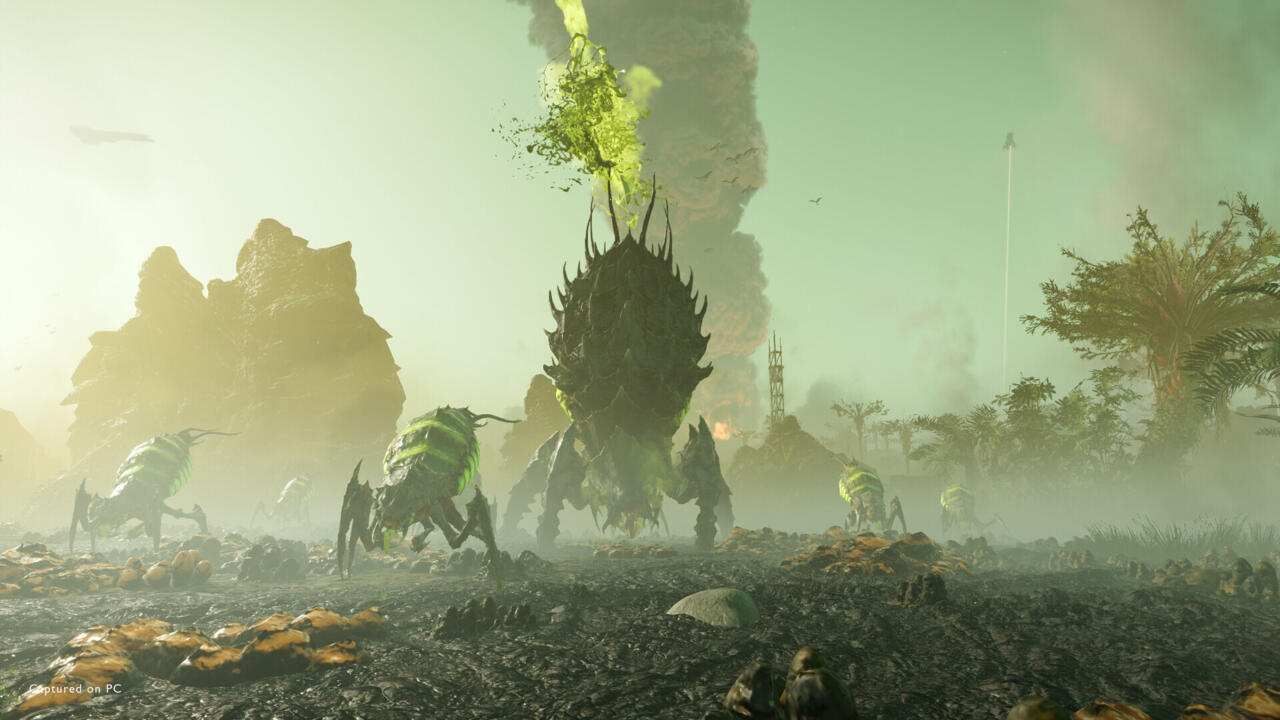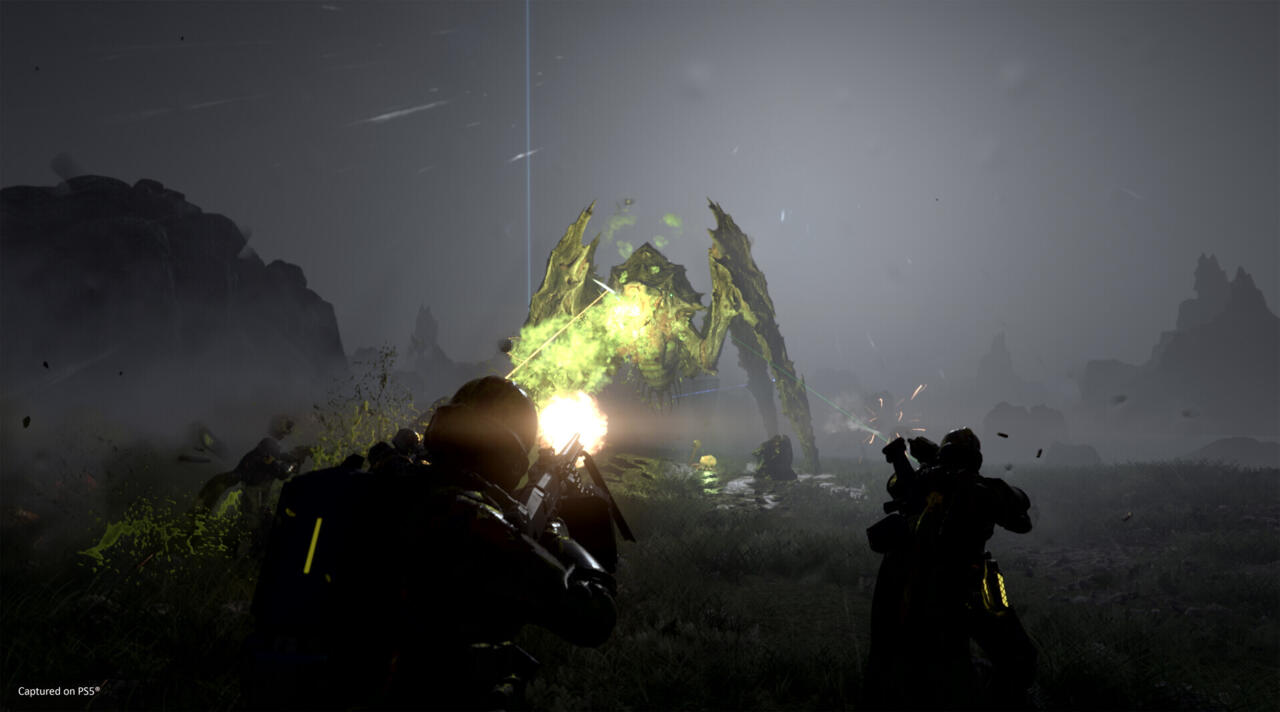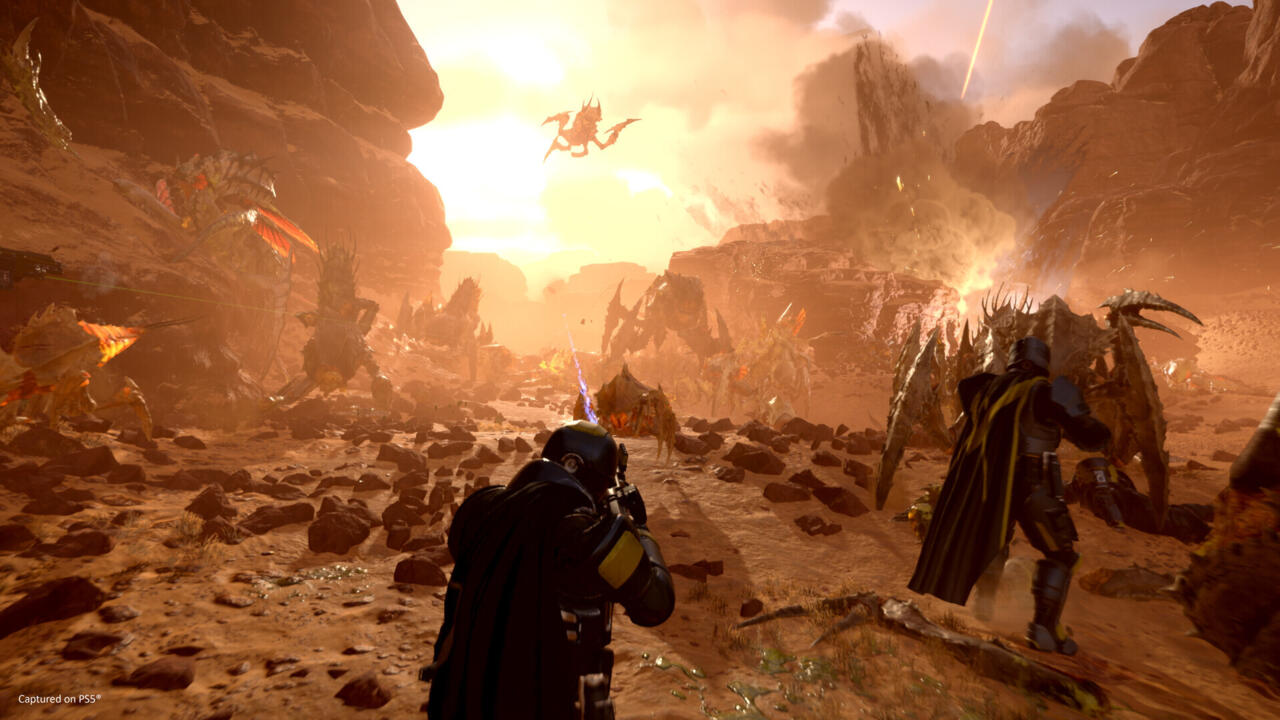How Helldivers 2's Terminids Compare To Real Insects, According To An Expert
Here's what we can learn about real-life insects from our battles against the Terminid scourge.
For citizens of Helldivers 2's Super Earth, nothing is more important than the triumph of Managed Democracy, and protecting that is the responsibility of every able-bodied person. One of the greatest enemies of Democracy is the Terminids, and that definitely has nothing to do with the fact that they naturally produce Element E-710. And while Helldivers might be fictional, and its government a literal joke, the game pulls ideas from real life. Among them are a variety of sources of inspiration for the Terminid scourge. I play Helldivers with my brother, Max Frederiksen--who happens to be a bug expert with the credentials to match. After hours and hours of democratic warfare, we sat down to talk about the ways the acid-spewing jerks that have been melting us by the millions connect to their real-world counterparts.
Max is an Associate Certified Entomologist and Master Pesticide Applicator (along with several additional licenses). When he's not fighting for Managed Democracy, he works as a branch manager at a pest control company, doing residential and commercial pest management for almost a decade now.
The insects themselves, Max says, pull from a variety of different arthropod inspirations, including aphids, mantids, and arachnids.

"The bugs in Helldivers 2 have some similarities to real-world arthropods, but they also have some pretty major differences," Max explained. "Most of the Terminids have two sets of hindlegs for walking and one set of forelegs for eating, defending, etc. This is fairly common in real-life bugs." Mantids are one analog for this; the smaller leg-like limbs that spiders use, called pedipalps, are two another, he said.
"The Scavenger Terminid looks a lot like some…species of Aphid," he continued, pointing to the spine-covered body that makes it hard to read the body structure of the insect. Many of these aphids are green and yellow, like the bugs in Helldivers. "I [also] see some big similarities between the Hunter and Stalker Terminids and real-life Mantids. Mantids stand on four hind legs and use their forelegs to eat [and] can also have wings that appear similar to the frills of the Hunters and Stalkers. The Spiny Flower Mantis (especially the nymphal stages) comes to mind."
Some others are harder to point to a direct analog, but even the monstrous bile titans have relatives in the world of entomology. Bile titans bear some visual similarities to Harvestmen--the spindly, but largely harmless arachnids we see skittering away when we pick up rocks or logs, that we more commonly call Daddy Longlegs. While Harvestmen don't spit acid or have venomous bites, and have eight legs instead of the four that Bile Titans have, they move similarly enough for it to be a notable point of reference. And while American Harvestmen generally look more like little brown blobs with stringy legs, others--like the Chilean Harvestmen--have spines that give them a more Terminid-like appearance.

The ways the insects behave and attack the valiant defenders of Managed Democracy that we call Helldivers have some similarities, too.
"Different caste members within the Terminid colonies perform specific jobs like scouting and colony defense," Max explained. Terminids patrols, when faced with the threat of Helldivers, will call in breaches to bring in more Terminids to fight off the invaders. Social wasp and bee colonies will use pheromones to call the hive for defense; that's invisible, unlike the gas clouds we see when Terminids call in a breach.
Max points to the Bile Spewer as one Terminid with some real-world analogs to how insects defend themselves.
"Real-life oil beetles can ooze a secretion that causes blisters and rashes," Max explained. "Subterranean termites…can also have some really cool defense mechanisms like spraying a toxic liquid or even exploding near a threat in an act of self-sacrifice [for its colony]."
Chargers are some of the most frustrating Terminids thanks to their tenacity and willingness to do what their name says--charge right at us.

"Scarab beetles [are] large, bulky, heavily armored, and stubborn," Max said. "[They] will tenaciously pursue their goals," which can be anything from pushing around a ball of feces to fighting off a competing male. Rhinoceros and dung beetles are two particularly good examples.
Even how we fight Terminids have their similarities for better, or often worse. That mission type that popped up recently, in which you have to activate three towers that spew anti-Terminid gas, reminds Max of the bait stations used to fight subterranean termites. We're also starting to see cases of pesticides being applied by drone--not unlike the Rover drones that are so popular with Divers. And of course, there's the orbital gas strike. While we might not call our gas strikes down from space, there are plenty of cases where gas can be used to fumigate for cockroaches, bed bugs, and things like that. One of the latest stratagems, the EXO-45 Patriot Exosuit, brings back an old classic: stepping on those little jerks. Terminids might be too big for a Helldiver to step on, but the Patriot can stomp on the smallest insects with ease, and much like in real life, stepping on insects is the oldest, cheapest form of pest control.
There are some stratagems, though, that you'll want to avoid when fighting bugs in real life--even if they're fun in the game.
"A brief search online will pull up many examples of house and apartment fires that started with amateur pest control," Max said. "Please call a professional."
Got a news tip or want to contact us directly? Email news@gamespot.com
Join the conversation